How computers calculate - PowerPoint PPT Presentation
1 / 21
Title:
How computers calculate
Description:
First half-adder adds two input digits, giving unit and carry digit ... OR gives carry digit if either half-adder has a carry digit (you will never have ... – PowerPoint PPT presentation
Number of Views:28
Avg rating:3.0/5.0
Title: How computers calculate
1
How computers calculate
- How binary operations yield complex capabilities
2
Activity Part 1
- Answer the questions in the Before You Start
section
3
Why Digital Not Analog?
- What is difference?
- Digital is discrete number analog varies
continuously - Analog signals prone to distortion because of
large range - Analog signals lose information with every
replication and over time
4
Discussion Question
- What are some applications for which you would
prefer an analog device? When would a digital
device be preferable?
5
Why Binary not Decimal?
- Two options is a lot easier to manage than 10
- Switch can be on/off
- Less confusion between different settings
- Faster
6
What is Binary?
- Only uses digits 1 and 0
- So 1110 (112)
- 10111 (213)
- 111100 (314)
- 10011010? (182819)
- 10011 (1216)
7
Activity Part 2
- Hook up the equipment as shown by your
instructor, and answer the first 3 questions in
the What type of signal is it? section
8
What Good is Binary?
- Can use numbers to represent letters
- Standard code ASCII has 7 binary digits (bits)
per character - e 1100101
- ! 0100001
- Del 1111111
- E 1000101
9
Activity Part 3
- Answer questions 4-8 in the What are the
properties of the signal? section
10
Activity Part 4
- Answer questions 9-15 in the How do signals from
different keys compare? section
11
Boolean Logic
- NOT the simplest outputs the opposite of the
input. - AND outputs a 1 only if both of its two inputs
are 1. - NAND outputs a 1 unless both of its two inputs
are 1. - OR outputs 1 if either input is 1.
- XOR outputs 1 if only one input is 1
12
So how do these do math?
- Can create a half-adder and a full adder
- Half-adders add two digits and output the unit
output and the carry digit - Full -adders add two digits and a carried digit
and give the two outputs
13
Creating a half-adder
- An XOR gate can give the unit output
- 0 0 ? 0
- 0 1 ? 1
- 1 0 ? 1
- 1 1 ? 0
- An AND gate can give the carry digit
- 0 0 ? 0
- 0 1 ? 0
- 1 0 ? 0
- 1 1 ? 1
14
Creating a full-adder
- Combine 2 half-adders and 1 OR
- First half-adder adds two input digits, giving
unit and carry digit - Second adds new unit digit with carry input,
giving final unit output and carry digit - OR gives carry digit if either half-adder has a
carry digit (you will never have carry digits
from both)
15
Adding 1111
Ones (20)
Twos (21)
1
1
1
1
1
1
1
0
1
1
So answer is 110, or 6 in decimal representation
16
Adding large numbers
- Start with right-most digits and work left
- Number of gates needed grows quickly
17
An exercise
- How many gates needed to add any possible 2-digit
decimal integers? - 9916413201608041211
- So need to add 2 7-digit binary numbers
- Need one half-adder and 6 full-adders
- Half-adder has 1 XOR and 1 AND
- Full-adders have 2 XOR, 2 AND, 1 OR
- Total is 13 XOR, 13 AND, 6 OR
18
Discussion Question
- Think about different mathematical functions you
are familiar with. Could you perform each of
them using only adders and half-adders? How
would you do it?
19
The Rest of Mathematics
- Subtraction, Multiplication, and Division can be
performed by combos of Addition and data shifting - Mathematical features such as Taylor sums can be
used to express complicated functions using
addition. - Data processing boils down to nothing but
addition (and storage and shifting).
20
So what have we learned today?
- Computers use digital binary numbers to
communicate and calculate - One convention for expressing text as binary
numbers is ASCII - Keyboards do not use ASCII, but use a quite
different format - Boolean operators can process binary information
- AND, NAND, and XOR can be used to create
half-adders and full-adders - All mathematical functions can be performed by a
series of addition and data shifting
21
Evaluation
- Log on to WebCT and answer the 6 questions in the
Act02eval quiz































